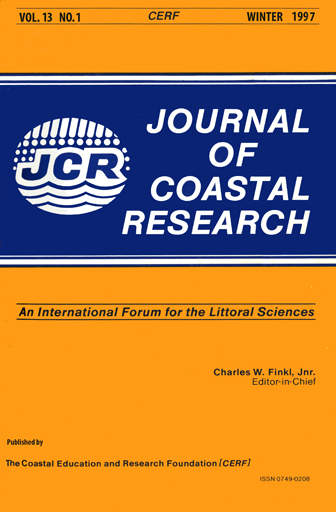Sediment Accretion Rates from Four Coastal Wetlands Along the Gulf of Mexico
Keywords:
Sea-level rise, subsidence, salt marshes, mangrovesAbstract
Our study of sediment accretion rates from four low tidal-range sites along the Gulf of Mexico does not support previous hypotheses concerning the relationship between tidal range and vertical accretion rates. The addition of our data to an earlier data set decreased the correlation between these variables, and all but one of our low-tidal range sites had positive accretion rates, contradicting previous studies which have predicted that low tidal-range sites would have negative net accretion rates. Additionally, in transects across the marsh, accretion rates decreased from low- to high-marsh stations; however, this appeared to be caused by changes in rates of organic matter accumulation, not mineral matter accumulation, as has been proposed in previous studies. Vertical accretion rates were more strongly correlated with organic matter accumulation rates than mineral matter accumulation rates, confirming previous studies which indicated the important role of sediment organic matter in determining sediment structure. These results do not imply that mineral matter is unimportant in maintaining the elevation of the marsh; mineral matter input affects organic matter production and sediment bulk density. There was little correlation between mineral and organic matter accumulation rates, with average organic matter accumulation rates for each site having little variation compared to the variation in mineral matter accumulation rates. This result supports a previous hypothesis that there may be a limit to annual rates of organic matter accumulation. Finally, the study indicates that the negative net accretion rates documented in Louisiana are not typical of other Gulf coast wetlands.


